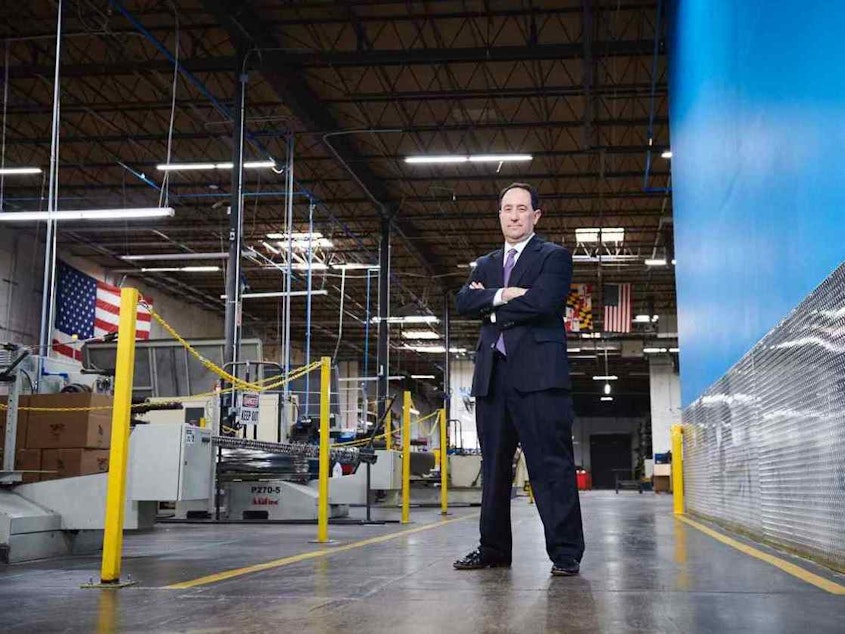U.S. factories emerge as a strong point in a weakening economy

It's been a very good year for U.S. manufacturing.
Factories added 467,000 jobs in the last 12 months. And factory production in September was the highest in 14 years, according to the Federal Reserve.
Even as other industries struggle under the weight of rising interest rates, factories keep churning out products to meet consumers' insatiable demand for cars, computers and candy bars. Now manufacturers are working to expand their capabilities, while struggling with supply and labor scarcities and looking to the near-future, where some economists and many on Wall Street say a recession looms.
Auto production has see-sawed in recent months, as carmakers continue to struggle with a shortage of semiconductors. But September was a good month for auto manufacturing, with production climbing by 1%.
Ten months ago, Drew Greenblatt purchased the Madsen Steel Wire Products factory in Orland, Ind., which supplies automakers, among other customers.
Sponsored
"Since we bought them, we've grown the company from 33 employees to 53 employees," Greenblatt says. "We've invested in new technology, robotic press brakes, new bathrooms for the employees. It's an aggressive push to reinvest back into the factory because we're so enthusiastic and optimistic about the future."
The semiconductor shortage epitomizes the challenges factories have faced throughout the pandemic in getting the parts and supplies they need. While those challenges have eased somewhat, managers say supply chains still aren't back to normal.
"I try to keep enough parts on the shelf," says Betty Jane Parrott, whose family-owned business, Milwaukee Metal Products, has been around for more than a century. "But if I have two on the shelf and I sell two, I can't sell another one till I get a new one back. And with four or five months' lead time, I can't anticipate that far in advance what I'm going to need."
Parrott says finding skilled workers is also a challenge.
"A lot of the baby boomers retired during COVID and they were the ones that had years and years of experience," she says. "We've been looking for qualified welders for probably a year. The skilled people, the trained people are very, very hard to find."
Sponsored
Manufacturing still far off its peak more than 40 years ago
Factory employment rebounded to its pre-pandemic level in June--two months earlier than overall employment in the United States. Factories added 22,000 jobs in September, down from 27,000 the month before.
"Manufacturing is roaring back," President Biden declared last month, touting what he called, "the strongest manufacturing job recovery since the 1950s."
But U.S. factories still employ only about two-thirds as many people as they did at their peak, in 1979. Back then, factories accounted for nearly 22% of all the jobs in the country. Today, fewer than 9% of U.S. jobs are in manufacturing.
"Every president wants to increase manufacturing. But the future of jobs is in the service sector," says economist Betsey Stevenson of the University of Michigan.
Sponsored
While some manufacturing jobs have moved overseas, U.S. factories have also become more efficient, allowing them to produce more things with fewer workers.
"We've become so much more productive at making things, we just only need to spend a small share of our resources — our people, our time, our factories, our equipment — making stuff," Stevenson says.
Factory jobs are also more skilled these days, as workers need the know-how to handle more advanced equipment.
While the new Federal Reserve data show factory production is still growing, there are anecdotal signs that demand for manufactured goods may be slowing.
A recent survey by the Institute for Supply Management found new factory orders declined last month. And manufacturing managers have grown more cautious about replacing workers when they quit or retire.
Sponsored
As mortgage rates have risen, home sales have declined. That's likely to curb demand for some manufactured goods such as furniture and appliances.
Factory exports may also be hurt by the strong dollar, which makes U.S. goods more expensive for customers in other countries.
That said, factory owners like Greenblatt remain optimistic. In addition to buying the Indiana factory, Greenblatt has expanded his original plant in Baltimore by more than 50%. And he plans to install two additional robotic wire bending machines next month.
"We're just seeing the demand," Greenblatt says. "We want to have the best technology for our people to make it through potentially stormy times." [Copyright 2022 NPR]



